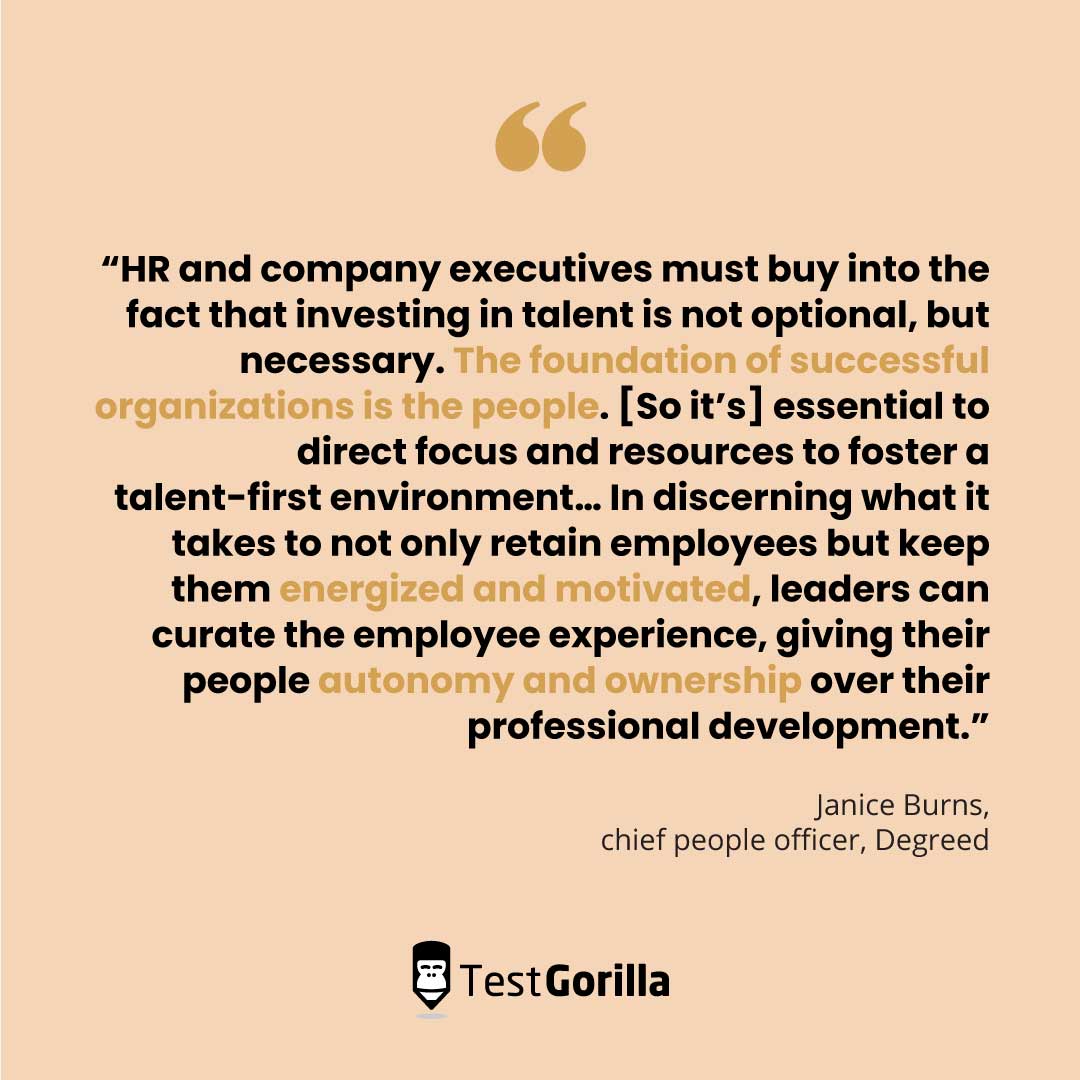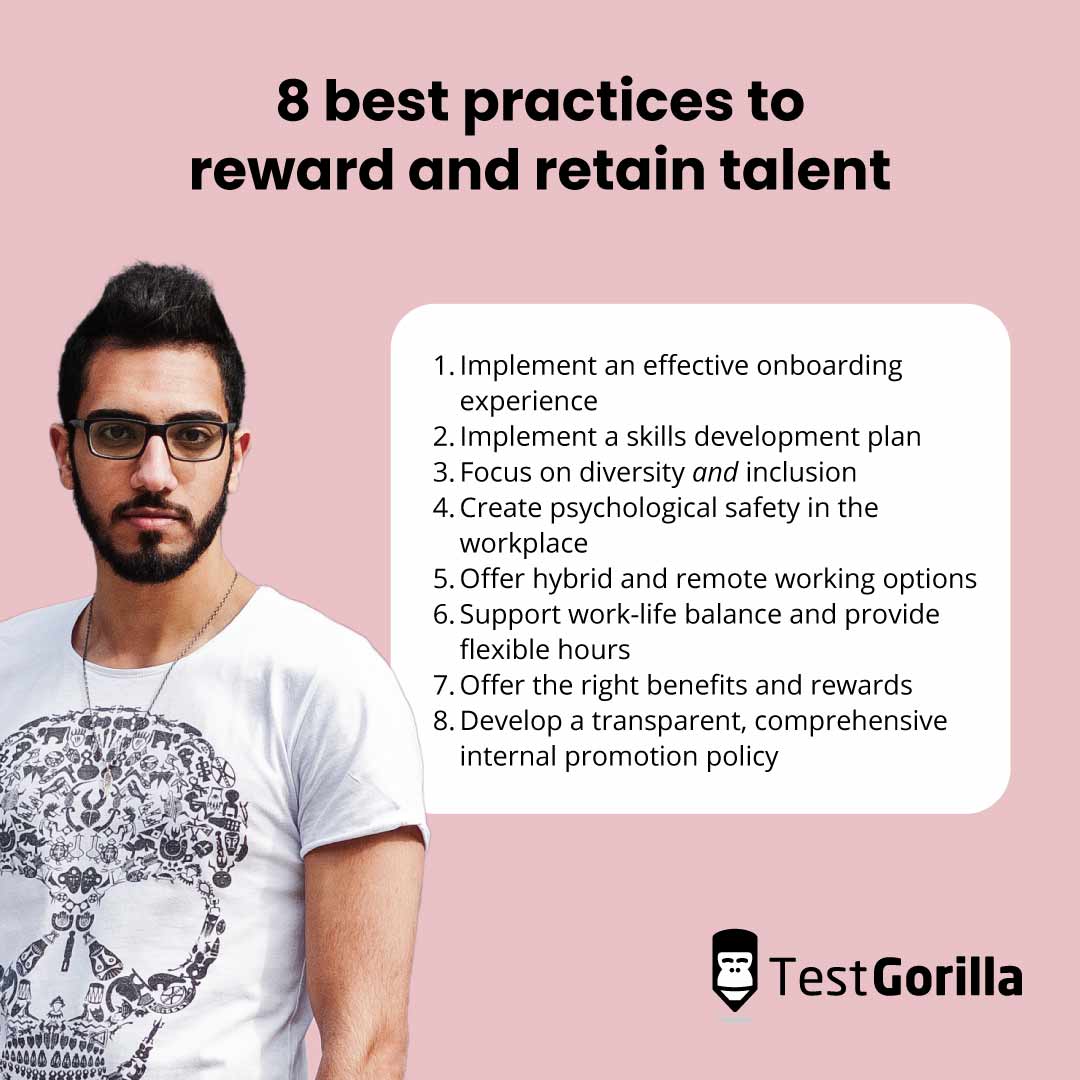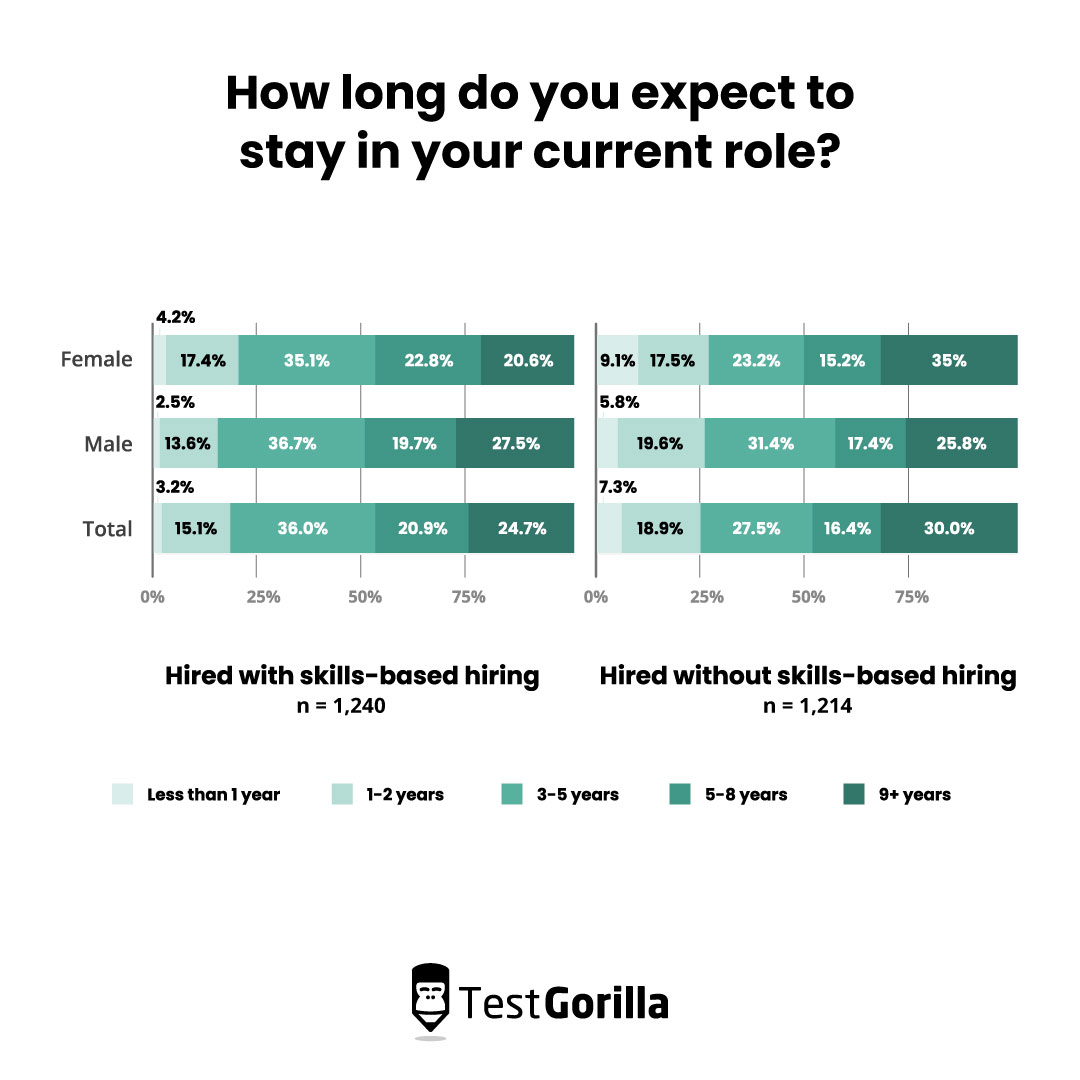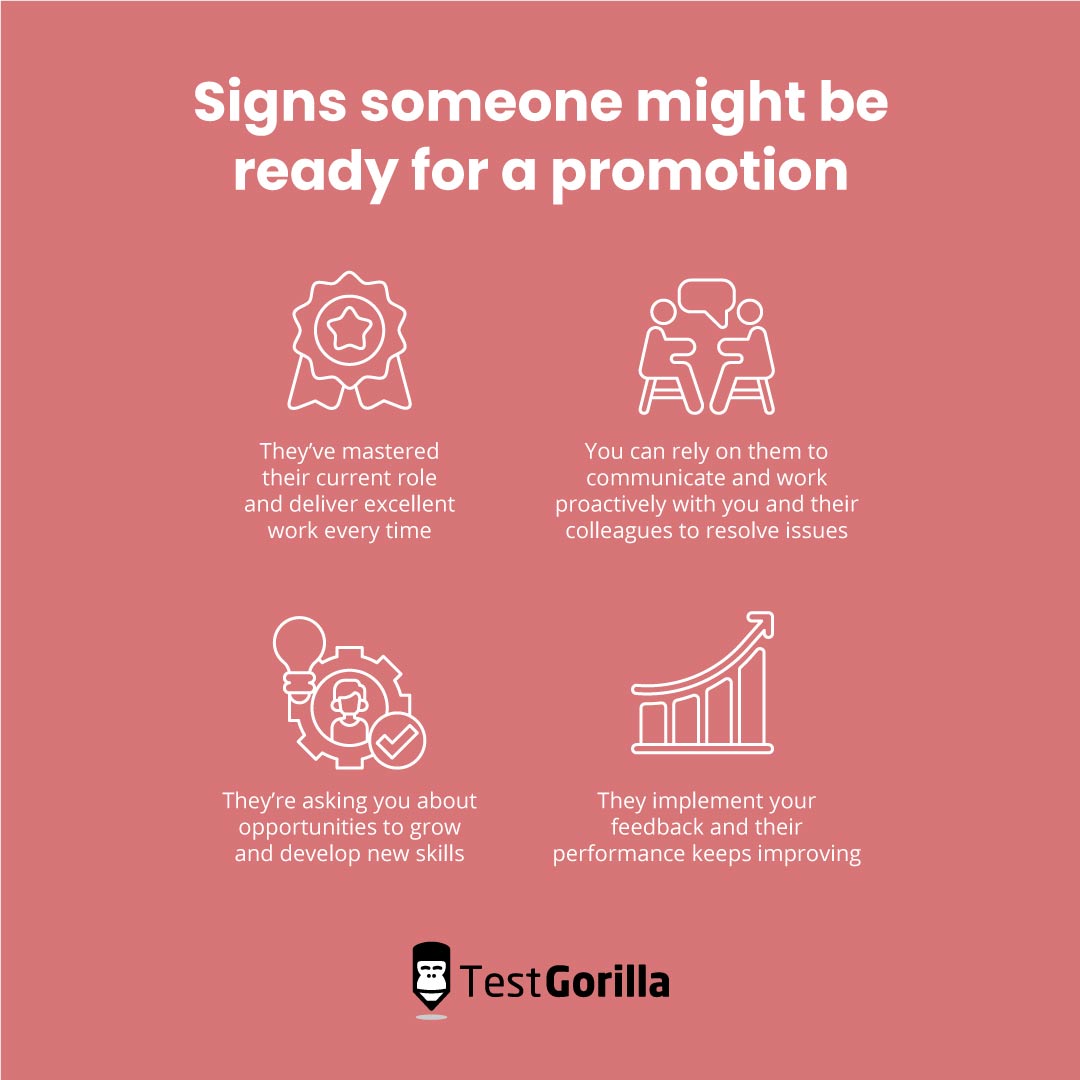8 best practices to reward and retain talent
So you just hired and onboarded a new employee. You’re excited for them to settle into their new role and get to know the team better.
In the early days, everything seemed to be going well. But, after just a few months, they hand in their resignation.
Clearly, things weren’t going as well as you thought.
Worse still, during their exit interview, you discover it could have easily been avoided.
It’s too late now, though. Your team has lost valuable knowledge and experience and may now be shorthanded. As for you, you’re back to square one and must repeat the entire process of recruiting, hiring, and onboarding a new hire.
To stay ahead in today’s competitive, talent-first market, you need to take a new, more creative approach to employee development and retention.
That’s why, in this article, we’ll explore the importance of a talent-first mindset and provide eight employee retention best practices to reward and engage your teams.
Why you need to develop a talent-first mindset
A talent-first mindset goes beyond just attracting skilled employees – it’s also about engaging and retaining them. And this is crucial to win the talent war and drive revenue generation.
That’s because people-first policies, like encouraging workers to take time off and providing mental health support, can increase employee satisfaction, engagement, and retention rates.
And with the estimated total cost of a new hire being anywhere between three to four times the position’s annual salary, you can’t afford to lose people because of preventable reasons like a stressful work culture or unfair compensation.
Of course, some amount of employee turnover is to be expected in all industries and sectors – whether it’s due to major life changes or pivots in employee career paths. However, people can also leave if they feel their efforts and time aren’t valued.
Just remember that although a competitive salary does play a big role in increasing employee satisfaction, there’s more to retaining and rewarding talent than financial incentives.
You have a major role to play in encouraging retention by finding top talent, putting the right people in the right jobs, and making sure they are happy and supported once they’re there.
Here’s how.
8 best practices to reward and retain talent
Though there’s no surefire way to reduce employee turnover, there are some best practices that will help you in your quest to make your company a great place to work.
Let’s take a look at some of them.
1. Implement an effective onboarding experience
Onboarding is a crucial part of helping employees settle into a new work environment and immerse themselves in the company culture. This process also helps new hires become familiar with their coworkers and begin to feel more at ease in their roles.
Seventy percent of employees who have a great onboarding experience say they have the “best possible job.” They’re also more satisfied with their workplace and much more likely to stay.
One way to ensure a successful onboarding process is by implementing an onboarding checklist. This document can help you streamline the process and ensure nothing falls through the cracks.
The following are some of the items you can include in your checklist:
Send your new employee a welcome email and inform your current people of the new addition to the team
Give your new employee an overview of the company, including details on the department structures
Assign the new team member a mentor to assist them with tasks during their first few months
Need more tips on how to prepare and enhance your remote onboarding? Check out our ultimate guide to virtual onboarding processes.
2. Implement a skills development plan
Ongoing skills testing is a helpful tool for identifying upskilling, reskilling, and internal promotion opportunities for current employees. For example, if one of your developers is ready to step up to a senior engineer role but isn’t certain which skills they need to master, you can use a programming skills test to find out.
But employee development plans shouldn’t just focus on hard skills. The Covid-19 pandemic sped up the timeline for the adoption of AI and robotics, bringing organizations face to face with an entirely new world of work.
To help your organization and employees stay competitive, develop the essential human qualities that can’t be replaced by even the most sophisticated technology, such as creativity, empathy, communication, and critical thinking.
Looking for practical ways to reskill and upskill your people? Check out our comprehensive guide to the best practices to reskill and upskill employees.
Finally, skills tests also help you hire the right people in the first place. Ensuring they’re the right fit for your open positions means they’re likely to stick around longer.
Our 2022 State of Skills-Based Hiring report found that people who are recruited via skills-based hiring stay longer in their roles. In fact, only 3.2% of employees recruited using this method plan to leave their roles in the next 12 months, compared with 7.3% of people recruited by other methods.
Skills-based hiring can play a major role in employee retention.
3. Focus on diversity and inclusion
Diverse, multicultural teams are more creative and innovative than homogeneous teams. This is because people with varied backgrounds, skills, and experience levels are more likely to bring different approaches to the same problems.
So embracing diversity can be an important step toward creating workplaces that are equitable as well as profitable. However, only fostering diversity on its own doesn’t help a team excel – leaders also need to create an inclusive environment where everyone feels comfortable being their authentic selves.
When leaders are viewed as inclusive, employees are almost three times more engaged and satisfied in their roles. They’re also almost three times more likely to be committed to the organization.
Some ways you can foster a more inclusive work environment include:
Promoting psychological safety for women, people of color, and neurodivergent and LGBTQ+ workers
Encouraging a hybrid or remote working model
Understanding what inclusivity means to your people through surveys, 1:1s, and focus groups
Educating all employees on potential unconscious biases and how to identify and battle them
Interested in more tips on how to promote inclusivity in the workplace? Check out this article by McKinsey on three steps to supercharge DE&I capability building.
4. Create psychological safety in the workplace
A psychologically safe workplace enables team members to comfortably speak up with ideas, questions, concerns, or mistakes. That, in turn, helps employees feel energized by their work, perform better, find creative solutions to challenges, and innovate quickly.
However, few leaders display the behaviors necessary to create psychological safety for their teams. According to McKinsey, as many as 41% of team leaders don’t frequently support, consult, and challenge their people. This leads to only 27% of their employees reporting a positive team climate under their leadership.
By contrast, almost 75% of employees whose managers successfully create psychological safety experience a positive, healthy work culture.
To create a safe environment, practice active listening and get a better understanding of the current state of this metric at your organization. You can do this through anonymous surveys. Then, create an action plan to foster and promote psychological safety among teams. Some steps you can take include:
Practicing a low-ego approach to work
Organizing workshops on active listening, battling unconscious bias, and diversity, equity, and inclusion
Being open to feedback and collaborative efforts
Shifting the focus from “mistakes” to “learning opportunities”
5. Offer hybrid and remote working options
The future of remote work is bright, and the shift toward greater flexibility regarding working location is here to stay.
A recent survey found that 55% of workers would rather take a pay cut of 5% or more to have flexibility regarding their working location. Those numbers speak to a growing desire for increased flexibility in the workplace – even at the cost of a lower salary. In fact, nearly 40% of workers would rather quit their jobs than return to the office full time.
By offering your employees the chance to work remotely or in a hybrid model, you’re helping build a happy, satisfied, and productive workforce. Those employees are more likely to stay at your organization in the long run.
Check out our post on the future of remote work for more on how to turn remote working trends to your advantage.
6. Support work-life balance and provide flexible hours
Unhealthy working habits are harmful to both employees and their companies – and yet, in practice, “hustle culture” beliefs are difficult to unlearn. That’s because they’re heavily ingrained and internalized by employees in every position.
However, as an employer, you can help your people avoid burnout and excessive workplace stress by enabling a more sustainable work-life balance.
One way to do this is by giving employees autonomy over their own schedules. Flexible working hours let people work during the hours they’re most comfortable, which helps 43% of workers be more productive. Giving individuals more control over their own time also helps them be happier, healthier, and more engaged overall.
Another step you can take is offering a generous amount of paid time off. This way, employees can take ample time to recharge, enjoy family vacations, or just dedicate themselves to their hobbies. Not only does this help avoid burnout, but it can also lead to higher engagement and retention levels.
You can also discourage after-hours emails and work-related messages, as well as consistent overtime.
To promote a healthy work-life balance, countries like Portugal and France have already implemented laws that ban employers from contacting employees after work hours. In March 2022, a similar bill was proposed in New York that would make it illegal to force workers to answer work communications outside working hours.
7. Offer the right benefits and rewards
Not every benefit is right for every employee. For example, US health insurance isn’t much use to remote employees based in Paris or China. Similarly, flexible hours will please parents but could cause child-free employees to feel left out.
“It’s important to offer rewards that are meaningful for the individual,” says Annie Morris, the editor-in-chief at Made in CA. “Some people want money or a promotion; others might want recognition or more responsibility. You can’t just give everyone the same thing… You have to tailor it to each person’s specific needs.”
To find out what your employees value, conduct a listening tour and include incentive-related questions in your engagement surveys. This lets you discover what benefits your people find meaningful.
Some questions you can ask include:
How satisfied are you with the current benefits?
How often do you take advantage of [benefit X?]
If you could add any reward to your compensation package, what would that be?
In your opinion, which are the least and most meaningful rewards we offer?
8. Develop a transparent, comprehensive internal promotion policy
Employees expect upward mobility within their first few years of working for an organization. And companies that regularly hire from within and foster internal mobility retain their people more successfully.
An effective internal promotion program is a great way to avoid losing valued employees to competitors. It also makes them feel appreciated and gives them the opportunity to grow and advance while working with you. In fact, growth opportunities are the top factor employees link to work satisfaction.
To stay competitive, introduce career development talks at your company, prioritize on-the-job training, and support your internal talent with upskilling and reskilling programs.
Here are some signs someone might be ready for a promotion:
They’ve mastered their current role and deliver excellent work every time
You can rely on them to communicate and work proactively with you and their colleagues to resolve issues
They’re asking you about opportunities to grow and develop new skills
They implement your feedback and their performance keeps improving
Keep an eye out for these employees, and communicate any potential growth opportunities to them.
The best insights on HR and recruitment, delivered to your inbox.
Biweekly updates. No spam. Unsubscribe any time.
Talent-first retention and reward strategies: the key to winning the talent war
Failing to retain talent has costly and disruptive consequences for your organization. It can lead to a lack of institutional knowledge, low employee morale, and difficulties attracting new hires if you get a reputation for high turnover.
That’s why managers and leaders need to take proactive steps toward talent-first reward and retention strategies – or risk losing their people. These initiatives have the potential to greatly impact employee satisfaction and engagement. And when people are happy in their roles, they’re more likely to stay.
That’s why, in this article, we provided our top eight best practices for employee retention:
Implement an effective onboarding experience
Implement a skills development plan
Focus on diversity and inclusion
Create psychological safety in the workplace
Offer flexible and remote working options
Support work-life balance and provide flexible hours
Offer the right benefits and rewards
Develop a transparent and comprehensive internal promotion policy
When you implement these best practices to retain employees and know how to listen actively, you’ll be well on the way to creating a great work culture where people feel seen, heard, and engaged.
Looking to retain and reward your people more effectively? Discover how a skills-first approach benefits your business, people, and reputation. Download the State of Skills-Based Hiring Report.
Related posts
You've scrolled this far
Why not try TestGorilla for free, and see what happens when you put skills first.


















